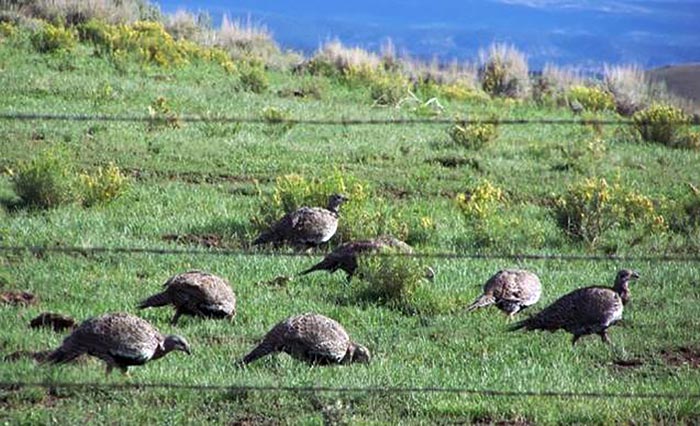

Female sage grouse move as a group at a site in northwest Colorado. New research examines the impact of hunting restrictions on the iconic bird across the West.
Credit: Jeff Beck

Female sage grouse move as a group at a site in northwest Colorado. New research examines the impact of hunting restrictions on the iconic bird across the West.
Credit: Jeff Beck

9 children born with severe LAD-l are symptom-free two years after treatment An investigational gene therapy has successfully restored immune function in all nine children treated with the rare and life-threatening immune disorder called severe leukocyte adhesion deficiency-I, or LAD-I, in an international clinical trial co-led by UCLA. LAD-I is a genetic condition that affects approximately one in a million people in the world. It is caused by mutations in the gene that produces CD18, a protein that enables white…

Wild and zoo-housed orangutans explore the world differently, study finds A new study comparing wild and zoo-housed Sumatran orangutans reveals that life in a zoo significantly alters how orangutans interact with their environment. Researchers analyzed over 12,000 instances of daily exploratory object manipulation (EOM)—the active manipulation and visual inspection of objects associated with learning and problem-solving—across 51 orangutans aged 0.5 to 76 years. The findings show that orangutans living in zoos engage in more frequent, more diverse, and more complex…

The study’s findings could potentially help develop targeted therapeutics for mood disorders like major depressive disorder Our lives are filled with binary decisions – choices between one of two alternatives. But what’s really happening inside our brains when we engage in this kind of decision making? A University of Ottawa Faculty of Medicine-led study published in Nature Neuroscience sheds new light on these big questions, illuminating a general principle of neural processing in a mysterious region of the midbrain that is the very origin…

The most robust estimate ever made in the biome shows that hunting, predation by domestic dogs, livestock diseases and competition with wild boars are among the main anthropogenic influences. A group of Brazilian researchers has, for the first time in the entire Atlantic Rainforest, estimated the population density of the five deer species of the biome. This allowed them to measure the main factors that influence the number of deer per square kilometer (km²) in forest areas. The results suggest…